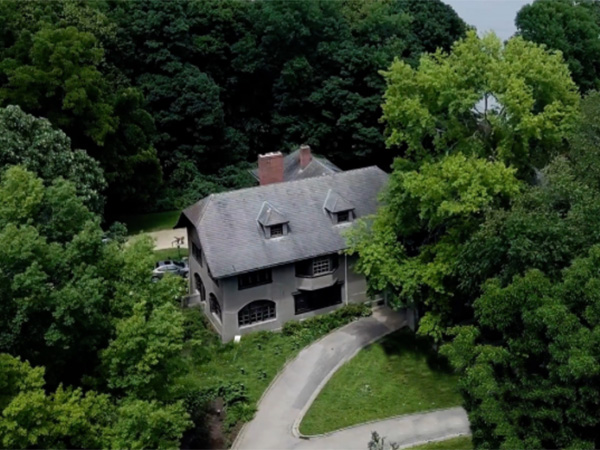
One board at a time, one child at a time, on a scenic bluff overlooking the Upper Mississippi River, a program to restore a picturesque estate is giving troubled youngsters a chance to restore their lives. The transformations are taking place on acreage known as Four Mounds, in Dubuque, Iowa, at the point on the Mississippi where Iowa, Illinois, and Wisconsin meet.
The young people volunteering to serve on the Four Mounds crews are juvenile offenders referred to the foundation’s Youth Empowerment Services (Y.E.S.) program, or they are students at Dubuque’s Central Alternative High School. The Central students receive credit toward their diplomas for the time they spend at Four Mounds, while the Y.E.S. youngsters, whose ages are generally 10-15, receive stipends beginning at $1 an hour.
Led by adult job coaches, the kids are returning Four Mounds to its glory days. They are restoring the 1924 two-story, colonial home located across the lawn from the inn and conference center. The restoration includes rebuilding the home’s numerous windows and for that, the frames were taken down the lane to the woodworking shop, where job coaches Neil Winger, Jr., and Bill Sheston preside.
Winger and Sheston are an ideal pair for this project because Winger’s background is as a professional cabinet maker and Sheston is a retired high school shop teacher and coach. According to foundation President John Gronen, each man brings something to the mix.
“It’s crucial to have everyday kinds of guys with people experience,” Gronen said. “It’s obvious Neil and Bill have a lot of respect for each other.” One of the first projects Winger organized when he joined the program in the fall of 1999 was a 15-by-20-feet expansion of the wood shop, which about doubled the 1935 building’s size.
The expansion was built, of course, by the Y.E.S. kids, many of whom were more accustomed to destroying things than building them. But build they did, putting in a furnace and air conditioning and laying a hard wood floor recycled from a demolished 1850 Dubuque hotel.
“We treat them like adults,” Winger said. “It makes them go home at night and feel like they’ve accomplished something.” The shop’s equipment is nearly complete, he added, with a shaper and joiner on order. “With those, we can do anything that any cabinet maker in the country can do,” Winger said, looking around the nearly-immaculate shop. In addition to restoration work, the wood shop crew makes gift items that they sell to help the foundation’s bottom line. That includes seven models of bird, bat and butterfly houses that sell for $12-$25 at the Four Mounds gift shop and at area stores. Just from word-of-mouth advertising by inn customers, the crew has standing orders for the most recently added item: the Adirondack chair.
In addition to designing seasonal items that the students build, Sheston contributes his own carvings to the gift shop. Once a week, he sits down with the students to teach them a bit of carving. Using basswood and X-acto knives, students whittle figures they can take home with them.
“All kids, regardless of their background, want to learn,” said the soft-spoken Sheston. “It gives them a feeling of accomplishment: ‘I really did something and I can see it. There it is.'” During his 30 years in education, Sheston went from teaching to administration, but left the principal’s office to go back into the classroom before retiring. His work at Four Mounds allows him to stay in contact with the kids.
“I enjoy working with young people and the fact that maybe I can give them something that will help them later on in life,” Sheston said. After years of working in cabinet shops in Iowa and Texas, including four years running a shop of his own, Winger said he learned the joy of watching the kids “see the light.” That applies to both their woodworking skills and their personal growth.
He speaks proudly of the 14-year-old who was labeled an incorrigible by his teachers. After coming into the Y.E.S. program, he became the wood shop foreman.
“Kids learn that they have the ability to learn,” Winger said. “And they learn patience. If we can teach the kids patience, that helps a lot.” His goal is to get the students to a point where they can be placed in the job market, based on skills they acquire at Four Mounds.
With the exception of leaded paint removal, the students have done everything from rewiring to removing wallpaper. Work is progressing quickly, and the project is expected to be complete and the home ready for guests by October 2001.
The Y.E.S. program’s success comes from treating the young people with respect, setting clear standards of behavior and providing the students with challenging and meaningful work, Gronen said. “We’re proud to tell people there’s no made-up work here,” he said. “There’s meaning for everything they do.”
– Mary Rue Bragg






